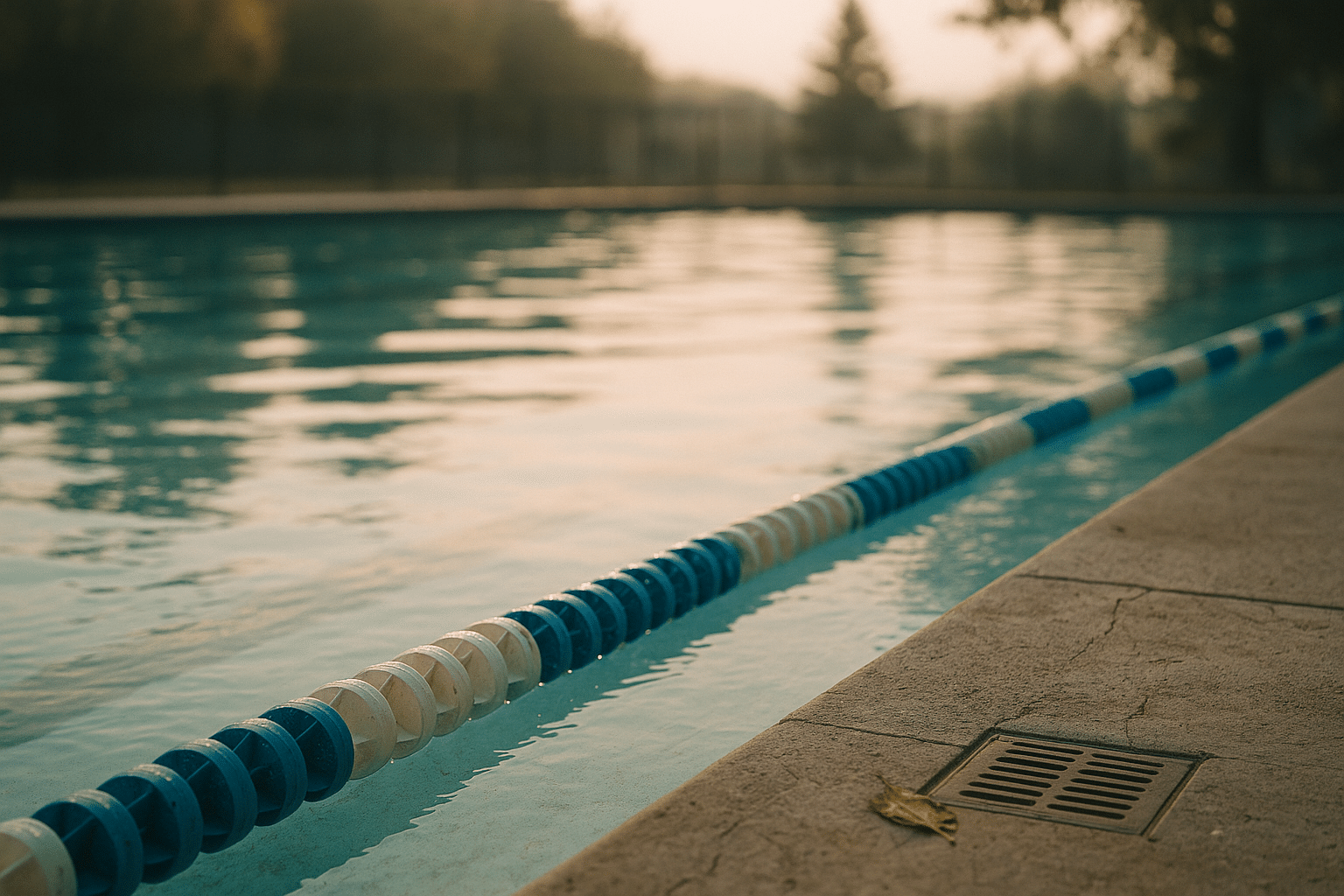
Explore the world of swimming
Introduction
Swimming is more than a sport; it is a life skill, a low-impact fitness strategy, a mental reset, and a gateway to exploring water safely and joyfully. Whether you want to improve cardiovascular health, cross-train without pounding your joints, gain confidence for open water adventures, or simply find a new way to manage stress, the pool or lake can become a welcoming, ever-changing training ground. This article dives into the science of swimming, foundational techniques, safe and effective training plans, the environments and gear that support progress, and a practical roadmap for turning first splashes into a lifelong habit.
Outline
– The Body and Mind Benefits of Swimming
– Mastering Technique: The Four Primary Strokes and Foundational Skills
– Building a Training Plan: Workouts, Progression, and Safety
– Water Environments and Essential Gear: Pools and Open Water Explained
– From First Laps to Lifelong Habit: A Practical Roadmap
The Body and Mind Benefits of Swimming
Few activities activate the entire body as efficiently and gently as swimming. With each stroke, large muscle groups in the back, shoulders, core, and legs coordinate against the resistance of water, while the heart and lungs respond to a steady, rhythmic demand. Unlike high-impact land sports, buoyancy supports body weight, reducing stress on joints. Depending on immersion depth, buoyancy can reduce effective weight-bearing by roughly 50–90%, easing movement for people managing joint discomfort and making consistent exercise more attainable.
From a cardiovascular perspective, water’s hydrostatic pressure assists blood return to the heart, which can lead to slightly lower exercise heart rates in water compared with similar effort on land. That means swimmers often sustain meaningful workloads without the same perceived pounding or heat buildup encountered in some outdoor land sports. Energy expenditure varies by stroke, intensity, and body size, but a typical session can burn several hundred calories per hour while distributing effort across multiple muscle groups. The result is a balanced training effect that builds endurance and functional strength without focusing stress on a single joint or tendon.
Beyond physiology, swimming nurtures mental health. The repetitive cadence of breathing and stroking acts like a moving meditation: a length-by-length metronome that quiets the day’s noise. Cool water and the absence of impact can help lower perceived exertion, making it easier to stay consistent. Many swimmers report improved sleep quality, reduced stress, and a sense of clarity after even short sessions. For people new to fitness or returning after time away, this combination of gentle loading and immersive calm can be especially motivating.
Swimming also carries practical value: it enhances water safety and confidence. Learning to float, tread water, and cover basic distances can reduce risk during recreational outings and empower people to enjoy lakes, rivers, and coastal waters responsibly. For athletes in other sports, swimming serves as effective cross-training—promoting shoulder and hip mobility, core integration, and aerobic development with limited wear and tear. In short, swimming is a versatile training modality that supports heart health, muscular balance, and psychological well-being in a single, fluid package.
Mastering Technique: The Four Primary Strokes and Foundational Skills
Technique is the secret current beneath smooth, enjoyable swimming. Each of the four primary strokes—freestyle, backstroke, breaststroke, and butterfly—relies on streamlined body position, balanced rotation or undulation, well-timed kicks, and efficient breathing. Start by reducing drag: keep the head aligned with the spine, extend through the crown, and maintain a long, horizontal line. A compact kick and clean hand entry matter more than brute force; the water rewards precision.
Freestyle emphasizes rotational balance. Imagine a skewer through your head and hips: you rotate around it as you extend the leading arm, set the catch (forearm angled to press water backward), and finish the pull close to the body. Breathing works best when paired with rotation—turn the head with the body, one goggle in the water, one out, exhaling steadily so inhalation is quick and calm. Backstroke mirrors freestyle mechanics on your back, encouraging consistent hip-driven rotation and a relaxed, flippy kick while the face remains above the surface. This stroke is an excellent way to practice rotation without disrupting breathing rhythm.
Breaststroke stands apart with its symmetric timing. The glide is the heart of the stroke: sweep out, catch, draw hands under the chest, then streamline forward as the kick snaps together. The kick originates from the hips with heels drawing up, feet turning out, and a powerful whip that finishes together. Butterfly combines rhythm and timing with a compact double kick: one to help lift into the breath, another to drive forward into the stroke. The arms enter wide, set a strong catch, and recover relaxed over the surface. Many swimmers benefit from drilling butterfly in short bursts to master timing before building distance.
Useful technique cues to revisit regularly include:
– Keep your head neutral; look down (freestyle, breaststroke) or straight up (backstroke) to align the spine.
– Shape the catch with a high elbow so the forearm becomes a paddle that presses water backward, not downward.
– Kick from the hips with relaxed ankles; avoid excessive knee bend that adds drag.
– For freestyle and backstroke, rotate through the torso—not just the shoulders—to engage core power.
– Streamline off every wall: arms locked overhead, ears between biceps, legs tight and toes pointed.
Drills help translate concepts into muscle memory. For freestyle, fingertip drag promotes a relaxed recovery, while catch-up drills sharpen timing. Kickboard sets teach kick efficiency, and vertical kicking exposes alignment issues quickly. Pull buoy and snorkel combinations isolate the catch and body position. Short, high-quality drill sets—sprinkled between steady swimming—build habits that pay off across all strokes. With patience and consistent practice, the water will feel less like a barrier and more like a partner in motion.
Building a Training Plan: Workouts, Progression, and Safety
Effective swim training blends structure with flexibility. A well-rounded session includes a warm-up, technique or drill focus, a main set matched to your goals, and a cool-down. Begin with 5–10 minutes of easy swimming to wake up the shoulders, hips, and ankles. Add simple mobility on deck—arm circles, band pull-aparts, gentle hip hinges, and ankle rolls—to prime tissues for the work ahead. Then insert drills to reinforce one or two technique priorities. This keeps form front-of-mind before fatigue sets in.
For fitness and endurance, anchor your main set with repeatable intervals. Instead of chasing all-out speed every day, use pacing tiers (easy, moderate, challenging) that you can sustain. Example structures:
– Beginner: 6–8 x 50 with 20–30 seconds rest, focusing on smooth breathing and consistent stroke counts.
– Intermediate: 8–12 x 100 at a steady pace with 15–20 seconds rest; every third rep includes a technique focus.
– Advanced: 3–4 rounds of 4 x 100 descending effort (each 100 slightly faster than the last), followed by 200 easy recovery.
Progression can follow simple rules: add a repetition each week to your main set, shorten rest slightly, or insert a controlled effort set (for example, 4 x 50 strong pace with full recovery). Reserve one session per week for technique-heavy work, one for steady aerobic volume, and one for speed or threshold efforts if your shoulders feel resilient. Recovery matters: prioritize consistency over hero workouts. Most adults thrive on 2–4 sessions per week, scaled to time and energy.
Safety is the compass of every plan. Hydration is essential; you still sweat in water. If swimming outdoors, consider time of day, sun exposure, and visibility. For open water, swim with a partner or organized group, wear a bright cap for visibility, and choose routes with lifeguard presence when possible. Learn to sight: lift the eyes just enough to locate landmarks without disrupting body line. If currents or wind pick up, adjust expectations and stay closer to shore.
Injury prevention centers on shoulder care. Emphasize scapular control exercises and balanced strengthening for the rotator cuff and upper back. Include these simple add-ons 2–3 times per week:
– Scapular retractions and wall slides to improve shoulder blade mechanics.
– External rotations with light resistance to support rotator cuff integrity.
– Thoracic mobility drills (open books, foam rolling) to maintain comfortable rotation.
The final ingredient is patience. Progress in the water often arrives like a tide—subtle, then suddenly obvious. Keep notes on intervals, rest, and how each set felt. Over a few weeks, you will notice smoother breathing, steadier pacing, and the quiet satisfaction of finishing sessions energized rather than exhausted.
Water Environments and Essential Gear: Pools and Open Water Explained
Choosing where you swim shapes the experience. Pools offer predictable conditions, clear sight lines, and measured distances that make pacing and progress straightforward. Lap lanes, marked by floating dividers, limit turbulence and help you learn consistent breathing and stroke timing. Water temperature in training pools commonly sits in a comfortable range suitable for sustained efforts. Indoor facilities remove weather variables, helpful for year-round routine, while outdoor pools deliver fresh air and a sense of space that many swimmers find invigorating.
Open water brings a different kind of learning. Lakes, bays, and calm coastal areas teach adaptability—managing wind chop, navigating subtle currents, and sighting along natural markers. The unpredictability builds confidence and resilience. Start conservatively: pick sheltered spots with gentle entry and exit points and consider the day’s conditions—water temperature, visibility, wind direction. A brightly colored safety buoy can improve visibility to others and provide a brief rest if needed. Always avoid areas with boat traffic, and give wildlife and plant growth plenty of space.
Gear selection is simple but impactful. A comfortable, well-fitting swimsuit allows freedom of movement without drag. Goggles are essential for clear vision; look for a snug, leak-free seal and a strap tension that stays put without pressing uncomfortably. Swim caps can keep hair contained and improve visibility in open water. Training tools help target specific skills:
– Kickboard: isolates the legs, emphasizing kick efficiency and body alignment.
– Pull buoy: lifts the hips to focus on arm mechanics and the catch.
– Paddles: increase surface area to develop strength and feel for the water; use sparingly to protect shoulders.
– Short fins: promote ankle mobility and reinforce a compact, hip-driven kick.
– Snorkel: removes the breathing variable so you can concentrate on body line and catch.
Caring for gear extends its life and keeps sessions pleasant. Rinse goggles and swimwear with fresh water after use, store them out of direct sun, and avoid harsh detergents that can break down elastic fibers. For open water swimmers, rinse equipment to remove silt or salt and check for wear. If you swim outdoors at dawn or dusk, consider the angle of the sun and reflections off the surface when choosing goggle lens tints. Small details—comfortable gear, appropriate environment, and simple maintenance—add up to smoother, more enjoyable laps.
From First Laps to Lifelong Habit: A Practical Roadmap
Turning curiosity into commitment begins with a clear, kind plan. Think of an eight-week arc that respects your current fitness and leaves room for life’s detours. Early weeks emphasize frequency and form over distance; later weeks gradually increase volume and sustained efforts. Keep a simple journal—date, distance or time, a couple of notes about breathing and stroke count. These breadcrumbs show progress you might otherwise miss.
A sample progression:
– Weeks 1–2: Swim 2–3 times per week, 20–30 minutes per session. Prioritize easy drills, relaxed breathing, and short repeats like 6–8 x 25 with generous rest.
– Weeks 3–4: Extend total time to 30–40 minutes. Build sets such as 8–10 x 50 with steady pacing, inserting technique cues every few reps.
– Weeks 5–6: Add moderate efforts. Try 6–8 x 75 or 4–6 x 100 with controlled rest, focusing on consistent stroke rhythm.
– Weeks 7–8: Introduce a threshold-style set once a week—such as 3 rounds of 4 x 100 descending—balanced by an easy technique day and a steady endurance day.
Tailor the roadmap to your goals:
– General fitness: steady aerobic sessions with brief technique breaks maintain momentum without overwhelming the nervous system.
– Weight management: prioritize consistency and total weekly volume, paired with balanced nutrition and adequate sleep.
– Cross-training for other sports: sprinkle in short, higher-intensity sets while preserving form; swimming can support recovery between land sessions.
– Open water confidence: once weekly, practice sighting and continuous swimming without walls; build distance gradually in safe, supervised environments.
Community enriches the journey. Shared lanes teach pacing and courtesy, and casual conversations at the wall often yield technique tips. If you prefer solitude, the quiet rhythm of laps can be just as restorative—a private conversation between breath and water. Either way, celebrate sustainable wins: one more length without stopping, a calmer exhale, a stroke that finally feels smooth. On weeks when motivation ebbs, remember that even a short, easy session reinforces the habit.
Conclusion for swimmers of every level: Prioritize craft over grind, patience over perfection. The water rewards presence and repetition. With a simple plan, safe environments, and technique that grows one drill at a time, swimming can become a steady anchor in your routine—supporting heart, muscles, and mind for years to come.


